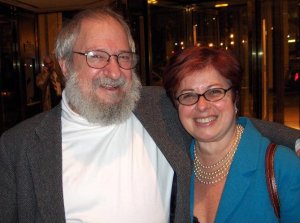On July 31, MIT Professor Seymour Papert passed away. He was, without question, one of the most significant thinkers about education the world has ever known. His name stands with Dewey, Montessori, Freire, Piaget, and a few others as an articulate spokesperson for what is often called “progressive education.” Among his many accomplishments was the development of Logo, a programming language with “no floor and no ceiling,” with which kids (and adults) could experiment and explore deep mathematical ideas, work with language, and create amazing graphical images. Logo was derived from LISP at the request of Seymour and his colleagues in 1967. Contemporary Logoesque languages like Scratch and Snap are popular today, and versions like Netlogo and others have raised the bar of what is possible.
Among his most significant contributions, I’d have to list the concept of “constructionism,” which states that a student can be said to know something when they have created an artifact separate from themselves. It doesn’t matter (in his view) if the artifact is a poem or a sand castle. The point is that the student has made something. This insight has been used by some to say that Papert was the father of the “maker movement,” although the same could be said of Dewey who preceded him.
But his main contribution is not often celebrated: People who were influenced by Seymour sought each other out, and lifelong friendships, affiliations, and at least one marriage, were the result.
As for myself, I was introduced to Seymour by Alan Kay in 1971 or 1972 when he and I were at Xerox PARC. Even though my primary research efforts were in other fields, I felt myself being pulled into the K-12 educational arena because of his novel insights – and within a decade I had completely shifted my career in that direction where it has stayed ever since.
Even though the “Logo community” wasn’t huge, it was filled with interesting people – many of whom I still count among my friends. I had the pleasure of speaking at Logo conferences, and talking about the language in the context of problem solving all over the world. At one of these conferences, I met Norma, the author of the first book on Logo in Brazil. On August 3 we celebrate sixteen years of marriage! One of my favorite pictures is of Norma and Seymour taken some years back.

Other people connected to Papert I’ve known for ages include Gary Stager, Brian Silverman, Mitch Resnick, Brian Harvey, Gail Lovely, Molly and Dan Watt, and a list of others that would go on and on! Hardly a day goes by when I don’t interact with someone who shares Papert’s view of what education could be.
And this brings us to our current challenge: finally transforming educational practice in ways that move us into the domain of child-centered learning where there are no barriers to what kids can achieve, and the tyranny of testing is gone for good. The shift from “instructionism” to “constructionism” is possible, but teachers need all the support they can get. Our best tribute to Seymour is continue our work in support of meaningful change in education for the benefit of all.

